15 Best Dwarf Fruit Trees to Grow Indoors
Not long ago, one of my daughters asked why our lemon tree was living in the kitchen. I laughed because, honestly, it felt like the tree belonged there more than I did most mornings. Its glossy leaves caught the sun just right, and the sweet scent of its blossoms greeted us before breakfast. I didn’t grow it for show. I grew it because I missed the garden during winter, and I wanted something alive near the coffee pot.
That’s the beauty of dwarf fruit trees. They don’t just sit in a pot—they participate. They bloom, breathe, and sometimes surprise you with fruit when you least expect it. Over time, these little trees start to feel like part of the family, offering more than just harvests—they offer peace.
I’ve grown a few of these myself and admired many others in homes of friends, greenhouse nooks, and charming urban balconies. Below are 15 dwarf fruit trees to grow indoors, including personal tips, experiences, and care suggestions to help you create your own tiny orchard—right inside your home.
#1. Calamondin Orange
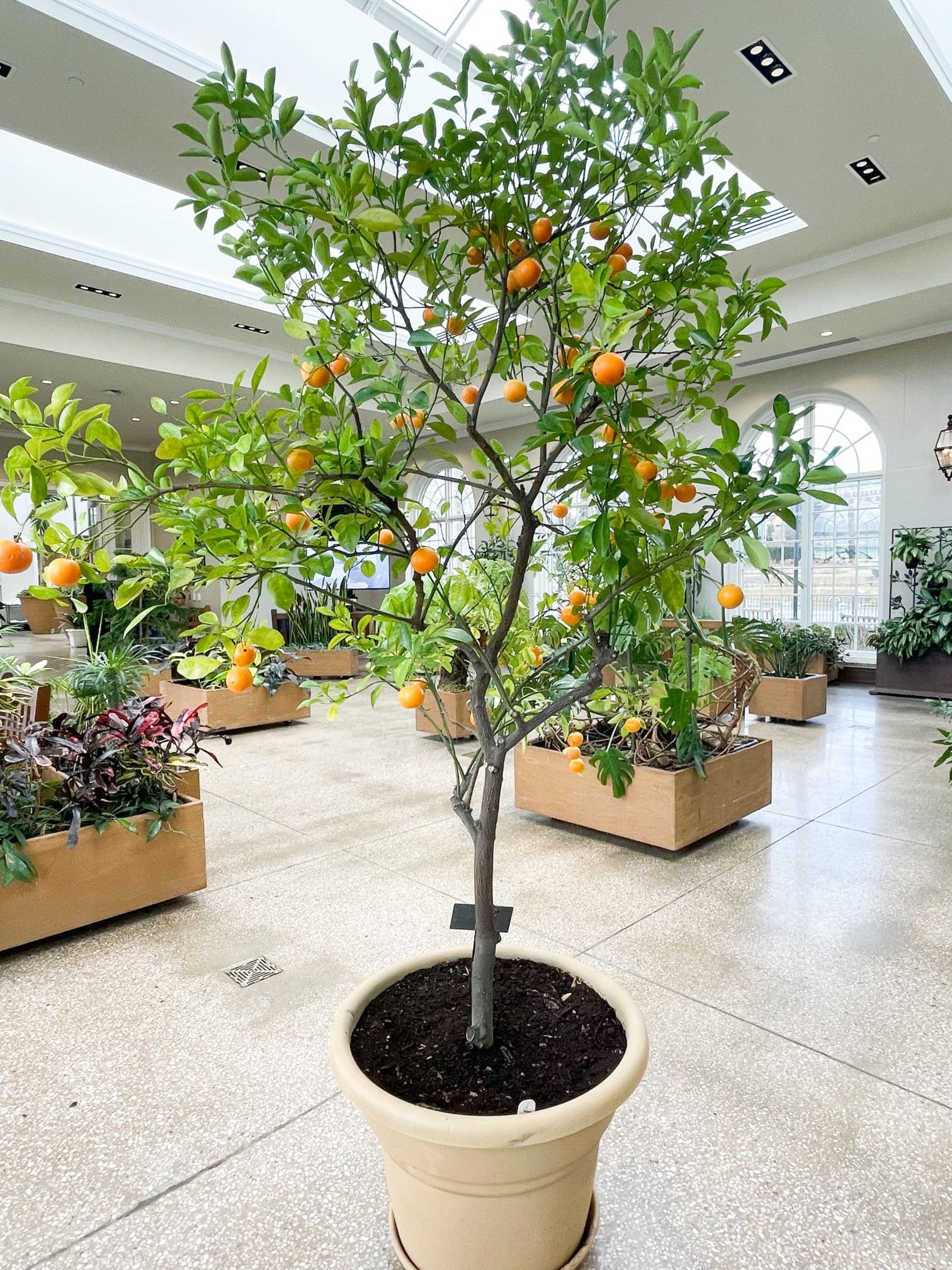
This citrus tree became my winter favorite during a particularly grey season. Its tiny fruits, bright as marmalade, tucked themselves between clusters of glossy leaves and white flowers that smelled faintly like spring. The best part? You can grow it right beside a sunny window.
Calamondins love bright but indirect light and enjoy being watered regularly—just keep the soil slightly moist, not soggy. The fruit is tart but edible and perfect for making marmalade or squeezing into sparkling water for a midday lift. The blooms alone are worth it, but the harvest is a bonus.
#2. Meyer Lemon
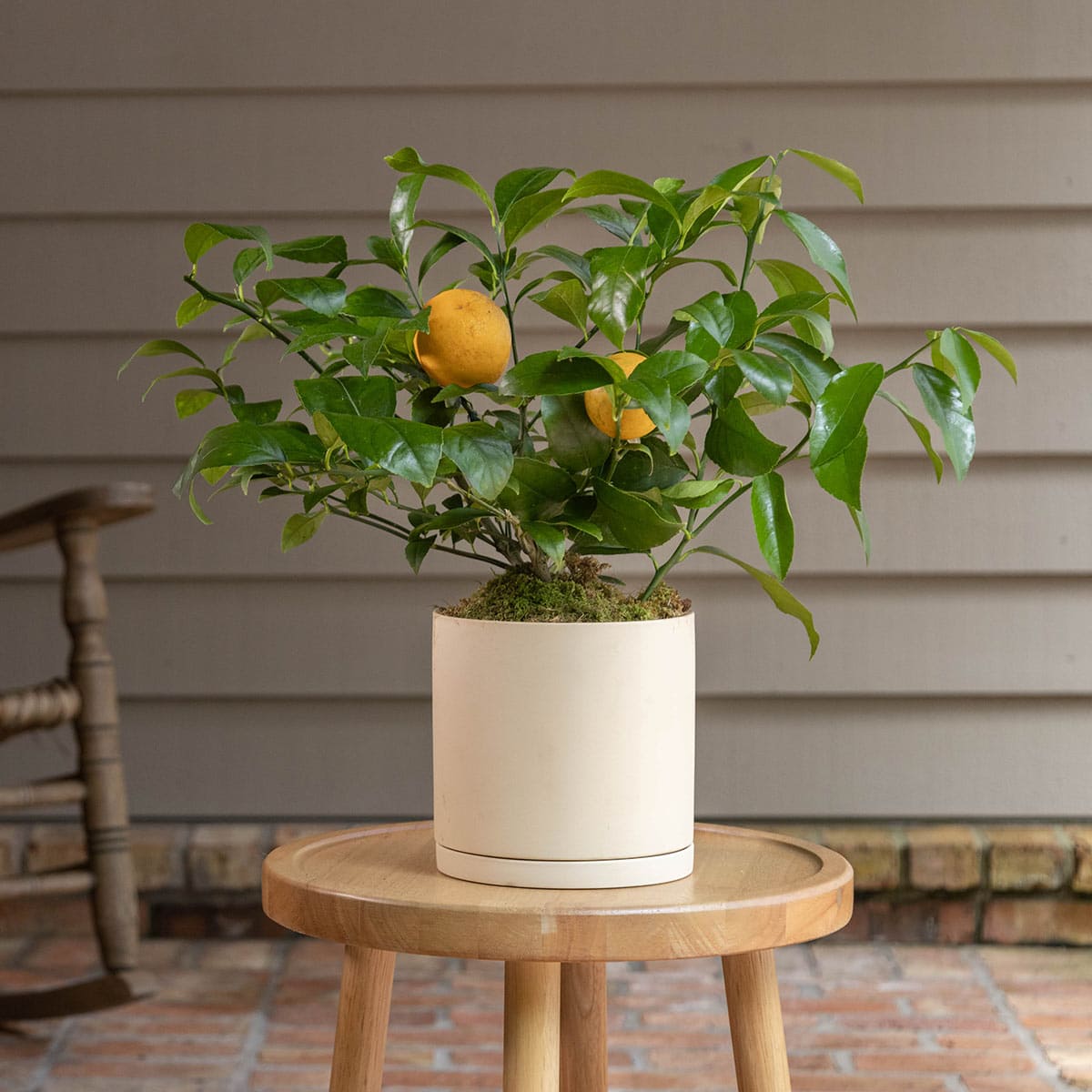
A friend once gifted me a baby Meyer lemon in a terra cotta pot. It sat near our kitchen sink for a year before giving us our first fruit—a plump, sunshine-yellow lemon that smelled like honey and pine. Sweeter than standard lemons, Meyer lemons are perfect for cooking, tea, or even candied peels.
To keep it thriving, give it six to eight hours of sunlight daily, water when the top inch of soil feels dry, and be patient. It might take a year or more to fruit, but the journey is worth it. And those deep green leaves? They’re beautiful all on their own.
#3. Key Lime
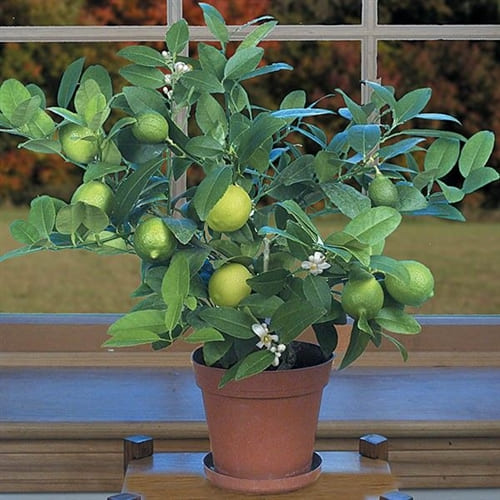
There was a summer when I couldn’t stop making lime-infused ice cubes, and it was all thanks to a cheerful little key lime tree in our sunroom. Its fruit was small but mighty—bursting with tang and fragrance. We’d pluck one, slice it open, and the whole room would brighten.
Key limes love sun—place them in your brightest window, ideally south-facing. Keep the soil moist but let it dry slightly between waterings. A light misting now and then keeps the leaves happy. And when those blossoms appear? You’ll know. The scent is pure tropical bliss.
Garden Tip: Rotate the pot every few days so the plant grows evenly and doesn’t lean toward the light.
#4. Dwarf Banana
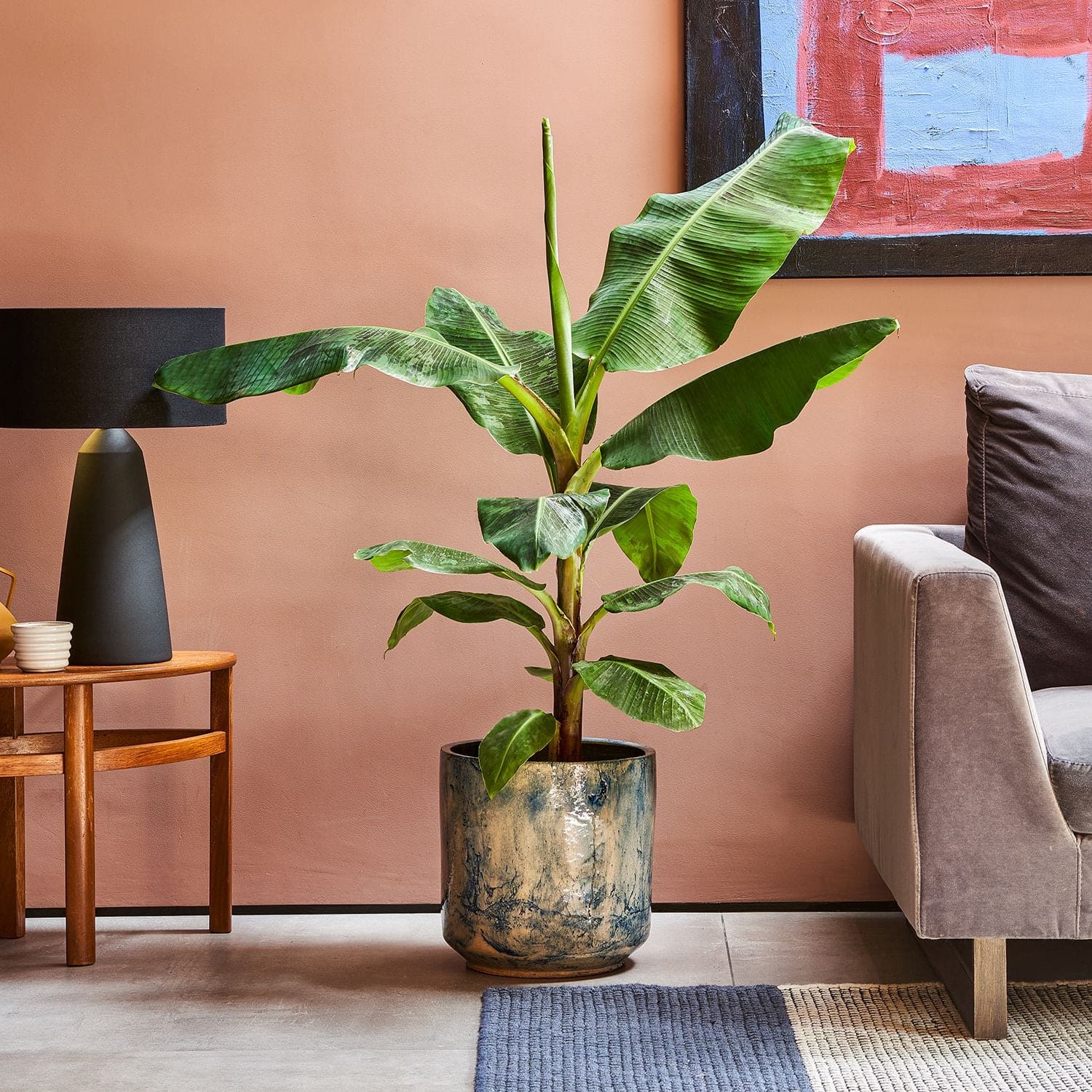
My kids were convinced I was lying when I told them we could grow bananas indoors. But the Dwarf Cavendish proved me right—and now it has its own name (they call it “Nana”). It hasn’t fruited yet, but the giant green leaves make our living room feel like a greenhouse getaway.
Bananas need warmth, lots of indirect sunlight, and humidity. Group it with other plants, use a pebble tray, or mist it regularly. The plant can grow surprisingly fast, and while the fruit takes time, the tropical vibe is instant.
Advice from trial and error: Avoid cold drafts. Even a few chilly nights by a window can shock the plant.
#5. Fig

The first time our fig dropped its leaves in late fall, I panicked. I thought it was dying. But a gardening friend assured me it was just going dormant—and sure enough, by spring, tiny buds appeared and grew into leaves, then fruit. The figs were plump, purple, and unexpectedly sweet.
Figs like a bright spot, especially one with morning sun. Use a pot with good drainage, and don’t overwater—let the soil dry between drinks. They might rest in winter, but they always come back with a gentle green flourish.
Try this: When the leaves fall, move it to a slightly cooler room. It mimics natural dormancy and helps with fruiting later on.
#6. Dwarf Pomegranate
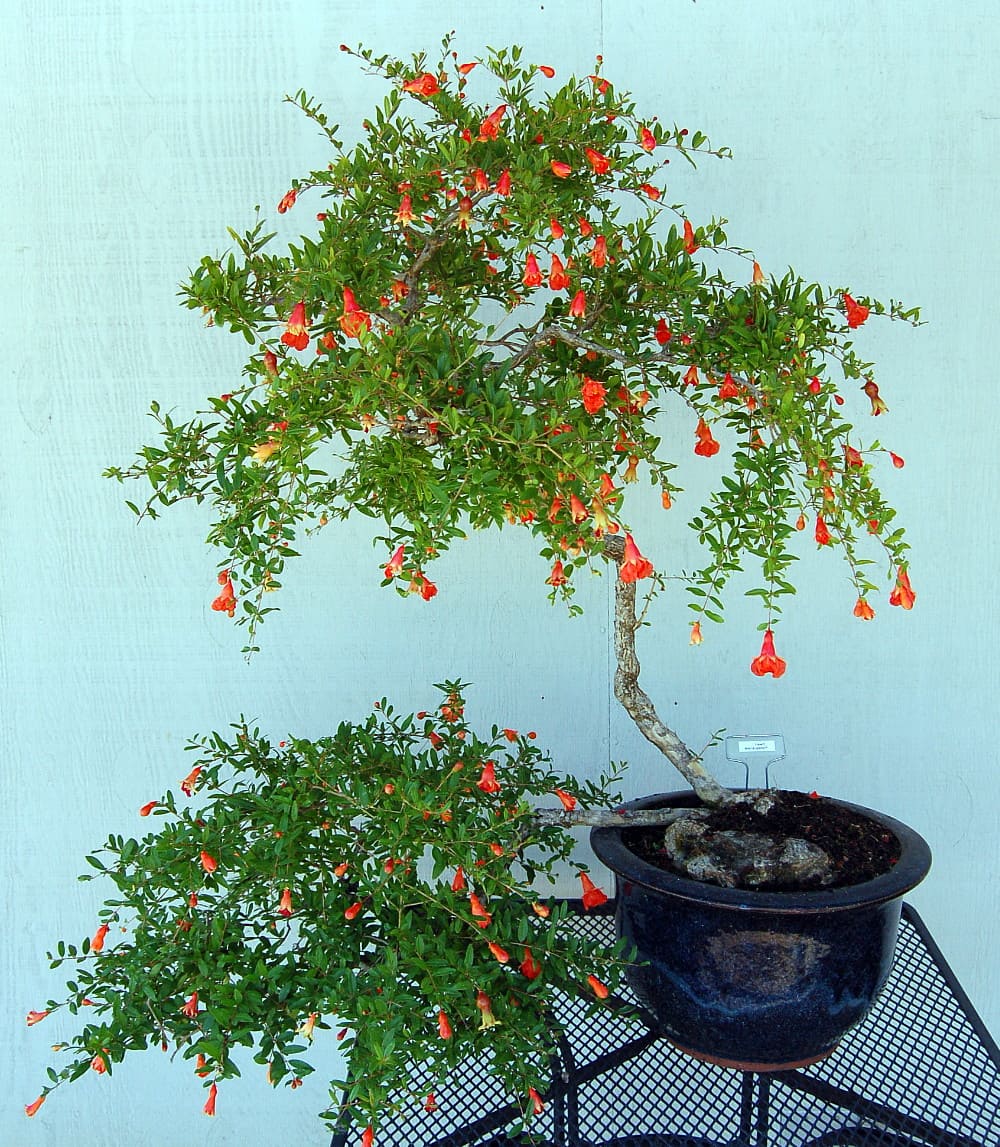
This one surprised me. I didn’t expect a small tree in a pot to gift us real pomegranates—but it did, bright and bold, tucked between orange blossoms that looked like tiny flared bells. It’s a conversation starter and a soul-lifter all in one.
Place it in full sun, ideally near a west- or south-facing window. It appreciates regular pruning to keep its shape and encourage new blooms. Water when the soil feels dry to the touch.
#7. Kumquat
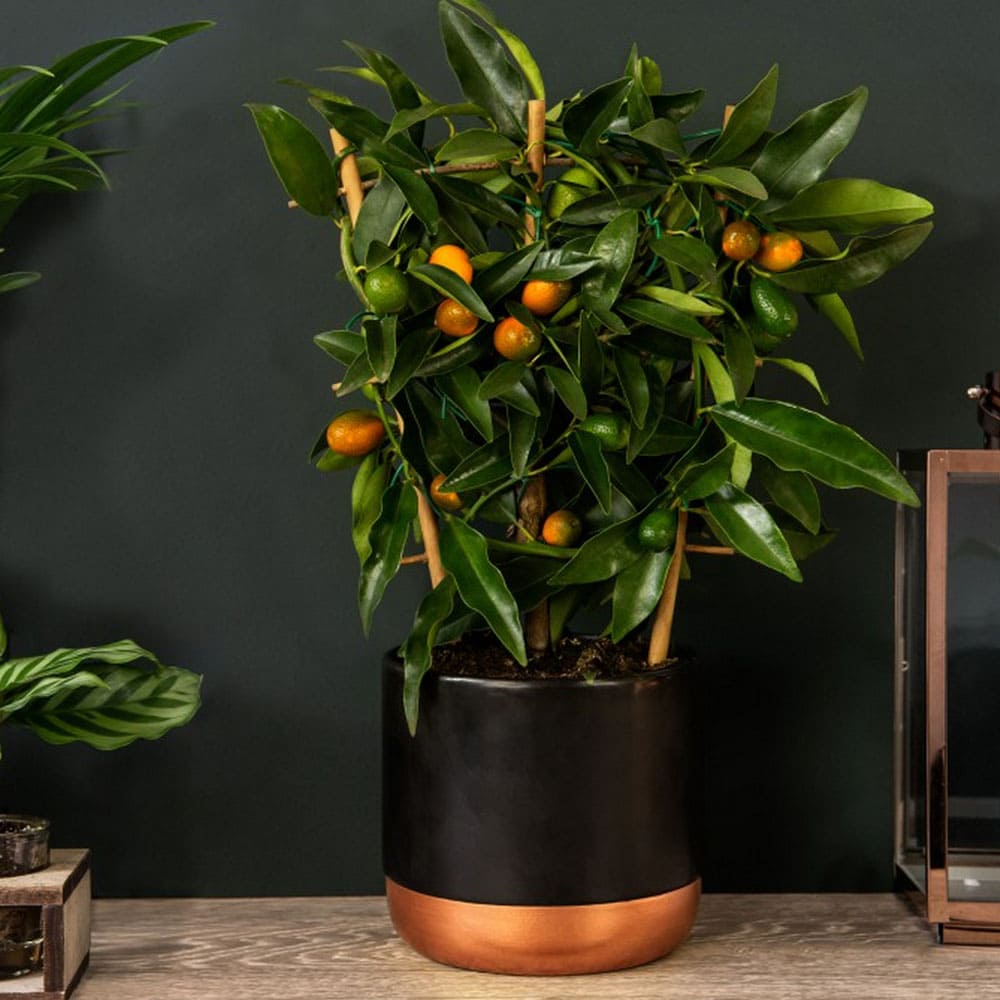
I’ll never forget the face my son made when he popped a whole kumquat into his mouth for the first time—surprised by the tart-sweet burst, then reaching for another one right after. These tiny, oval fruits look like jewels on the tree, and they’re meant to be eaten peel and all.
Kumquats thrive in bright sunlight and like to be kept evenly moist. Their glossy leaves and fragrant blooms make them as beautiful as they are useful. They feel like a small citrus celebration tucked into a pot.
#8. Dwarf Avocado
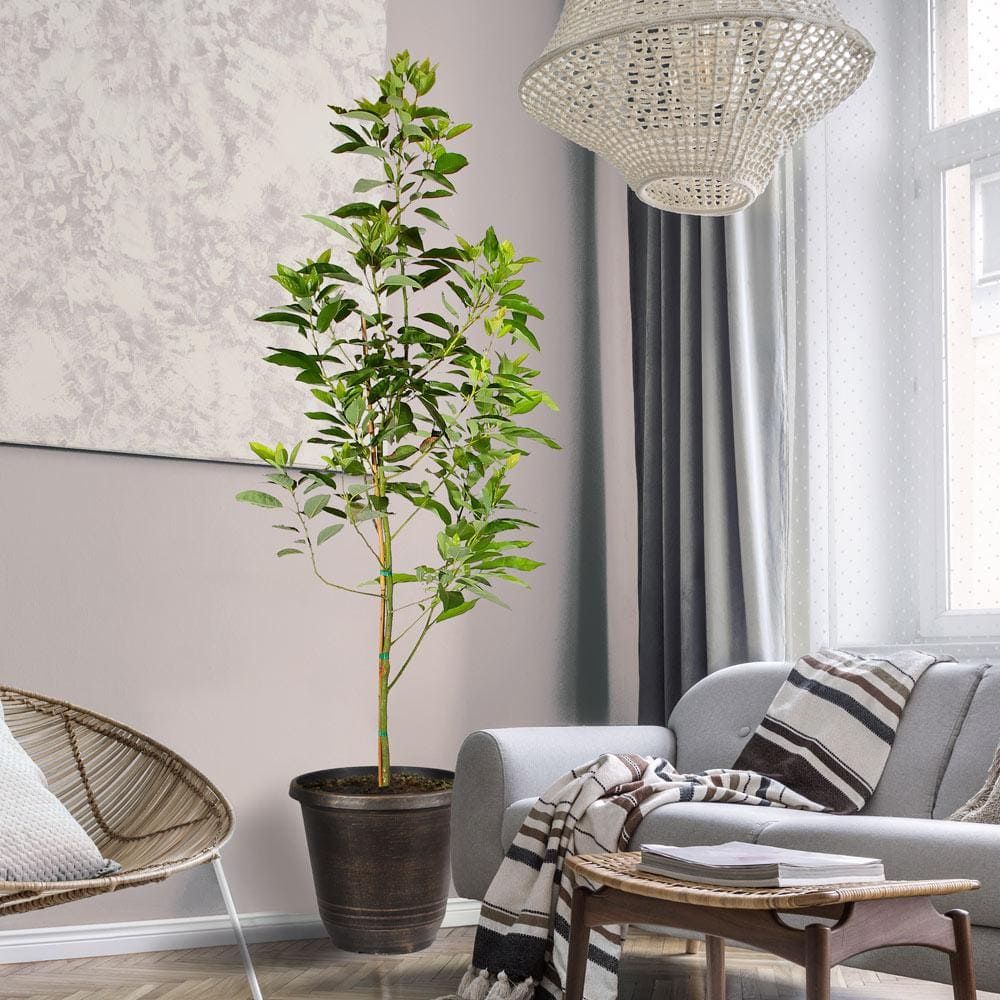
Growing an avocado indoors is a slow dance. You won’t get instant results, but the process—watching those glossy leaves unfurl, learning how the tree responds to light, touch, and time—is a peaceful reward in itself.
Avocados need six hours of sun daily and space to grow, even in their dwarf form. Keep watering deep but infrequent. If you’re lucky and patient, you’ll see fruit—but even without it, the lush foliage adds tropical charm to any room.
#9. Dwarf Peach

I was gifted a peach tree on a chilly birthday morning, and I didn’t quite know what to do with it at first. It sat by the back window, leafless and humble. Then spring came, and tiny buds formed—delicate blossoms followed, and by summer, we had fruit. Juicy, real peaches in a pot.
‘Bonanza’ is self-pollinating and needs a bit of a cold period in winter to reset for fruiting. Place it in a room that gets cool in winter, then move it back into full sun in early spring. It’s dramatic in bloom and gentle in rest.
#10. Dwarf Cherry

A cherry tree indoors always feels like a dream, but ‘Compact Stella’ makes it possible. With the right care, you’ll get a handful of sweet cherries each year, and in the meantime, you’ll enjoy the soft, lush greenery and graceful branching.
Cherries appreciate bright, direct sunlight and like to stay in rhythm with the seasons. They do benefit from a dormant phase, so giving them a cool corner during the colder months helps with blooming and fruiting.
#11. Dwarf Mulberry
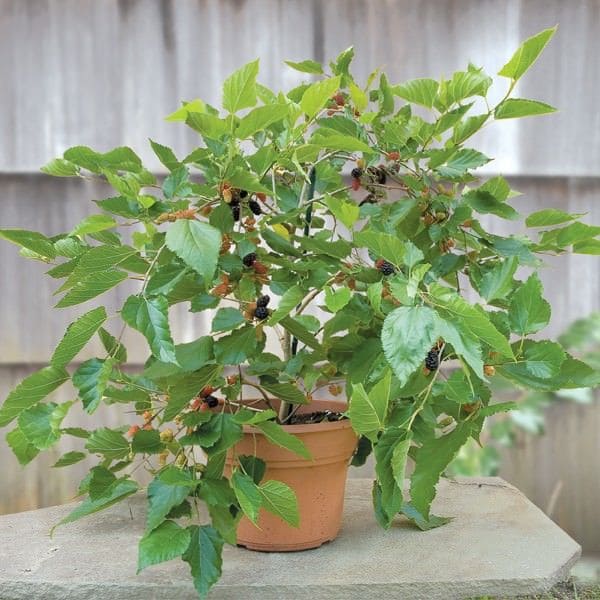
Mulberries are often overlooked for indoor growing, but the dwarf ‘Everbearing’ variety is perfect for small spaces. It produces sweet, black berries continuously through the year with the right care. These trees appreciate full sun and regular feeding.
Tip for indoor growers: Keep an eye out for leaf drop if your light level changes suddenly. It’s often temporary—just adjust the light or move to a sunnier spot.
#12. Dwarf Guava
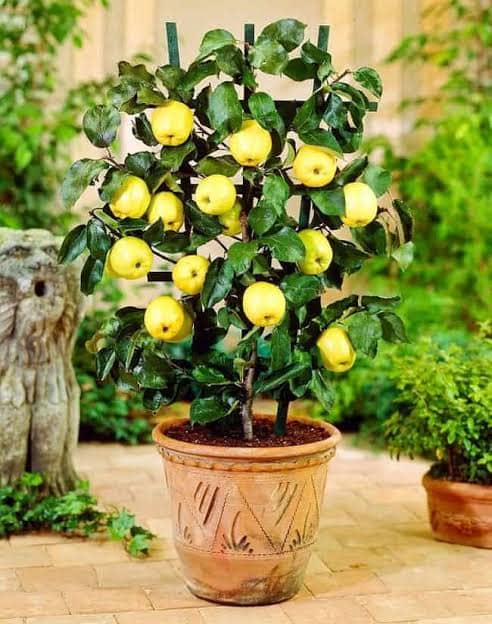
This little guava fills a space with tropical energy—thick leaves, sweet-scented blooms, and eventually, rounded fruits that are fragrant and pink inside. I once stepped into a friend’s sunroom and the aroma from her guava tree made me pause. It smelled like summer wrapped in sugar.
These trees love warmth, plenty of light, and well-draining soil. A sunny window and occasional pruning help keep them healthy and productive.
#13. Dwarf Olive

Even if your olive tree never fruits, it’ll still earn its place indoors with those silvery green leaves and soft Mediterranean energy. Mine lives near our back door and greets the morning light with grace, even on the greyest days.
Keep it in a bright, dry space and let the soil dry slightly between waterings. It doesn’t ask for much—just sun, space, and the occasional trim.
Advice: Avoid overwatering. Olives are used to dry spells and dislike soggy roots.
#14. Dwarf Persimmon
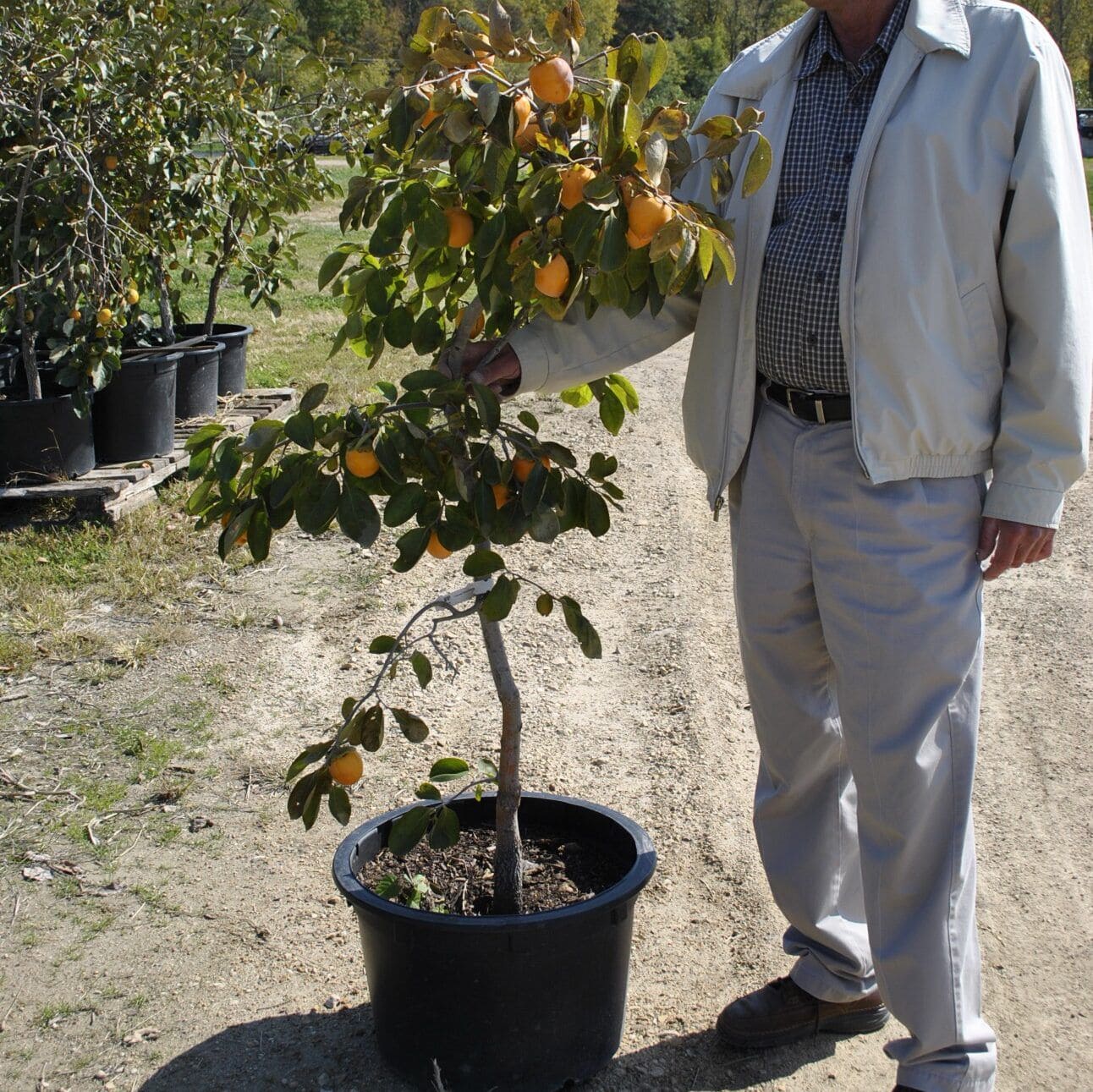
Patience is the language of the persimmon. But when it fruits, it’s worth the wait—bright orange globes with honey-sweet flesh, rich in color and flavor. They almost don’t look real, hanging from the branches like glowing ornaments.
Give your persimmon bright, direct light and gentle fertilizing every few weeks during active growth. It may take a few seasons to fruit, but it rewards a calm hand and steady care.
#15. Dwarf Coffee

This one’s a little unexpected, and not quite a fruit tree in the traditional sense—but it grows red cherries filled with real coffee beans, and that alone earns it a spot on this list. I keep one near my reading nook just for its glossy leaves and fragrant flowers.
Coffee plants prefer indirect light and love a humid environment. They don’t mind company, either—placing them near other plants helps keep humidity steady.
Quiet joy: When the white flowers bloom, the scent is subtle and lovely, like jasmine and vanilla on a breeze.
Final Thoughts
Growing fruit indoors doesn’t require acres or experience—just a bit of sunlight, a little patience, and a willingness to learn as you go. Each dwarf tree has its rhythm, its mood, its own quiet way of adding life to a space. Some bloom before you expect them to. Others take their time, teaching you to wait, water, and watch.
These trees become more than houseplants. They become part of your days—offering fragrance, foliage, and sometimes even fruit with the morning light. They soften the room, slow you down, and make even the smallest corner feel rooted and alive.
Pick one. Try it. Let it grow beside you.







